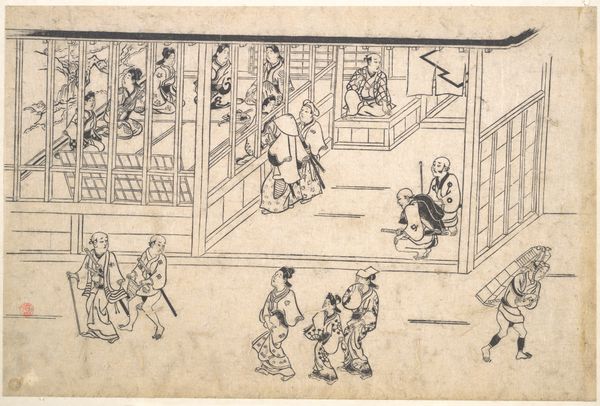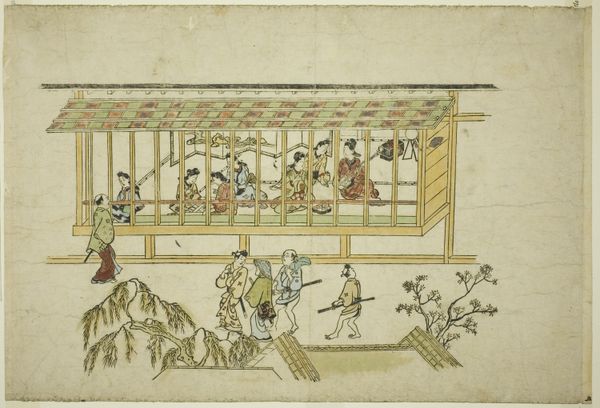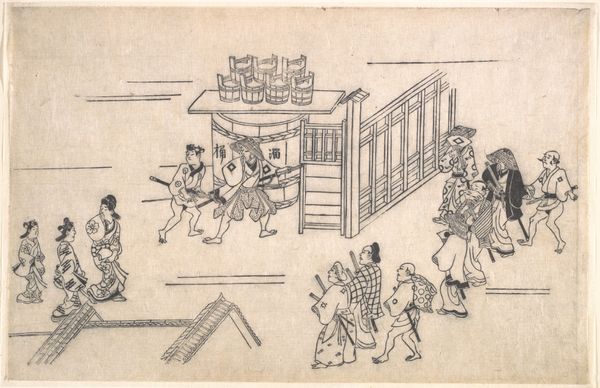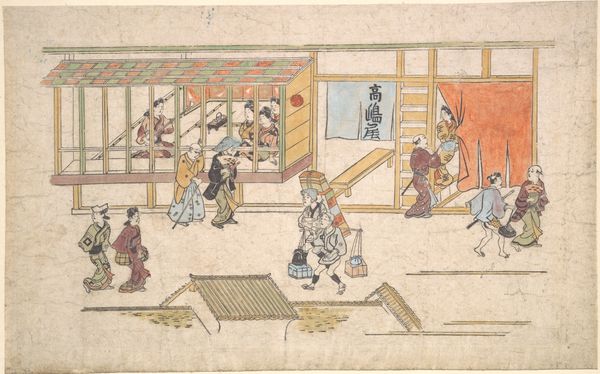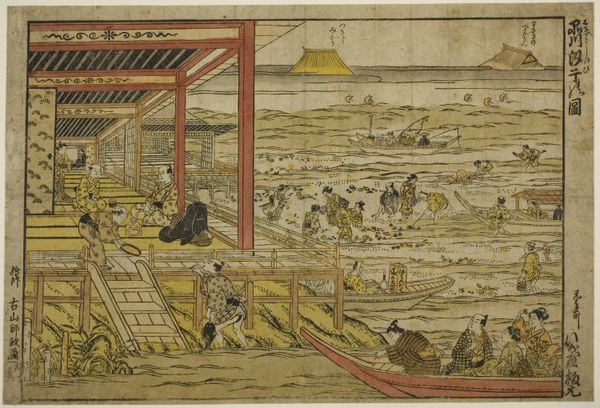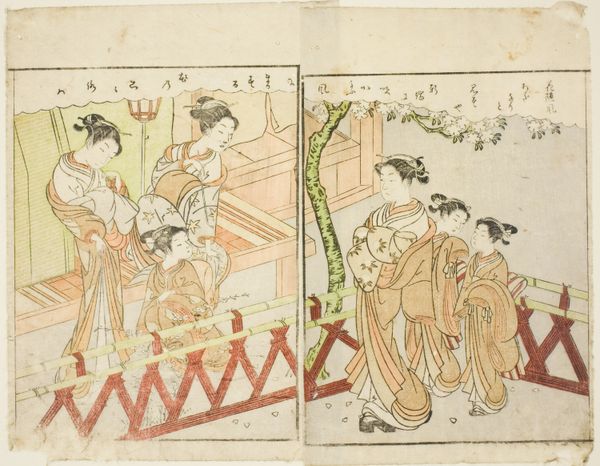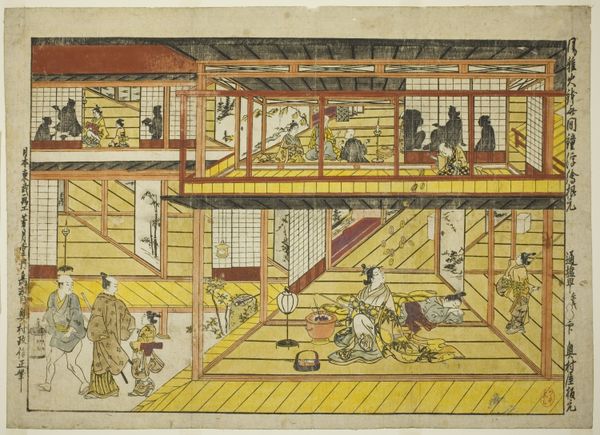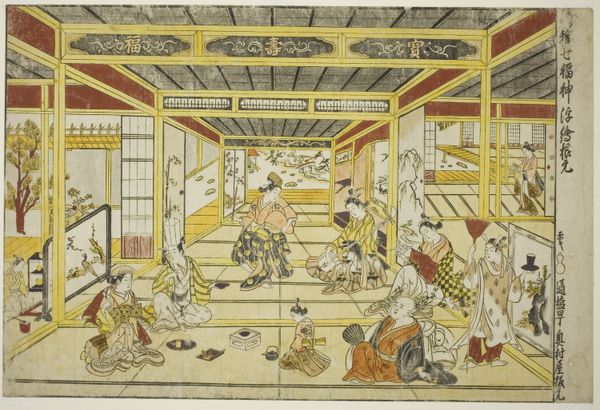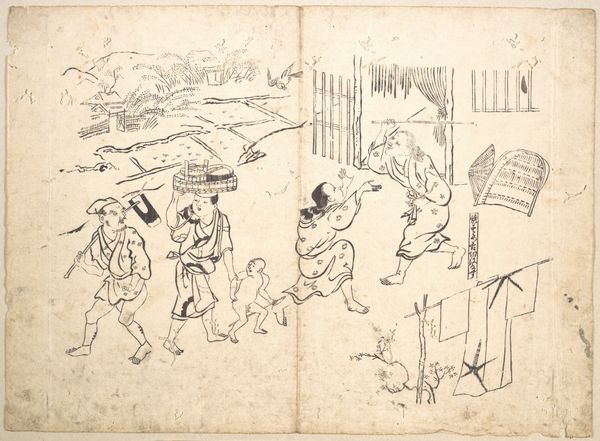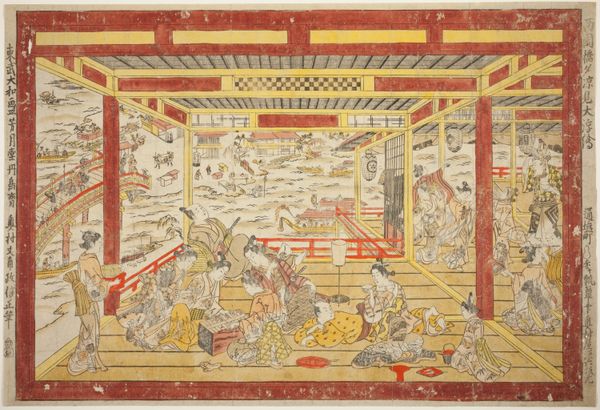
The Sixth Scene from Scenes of the Pleasure Quarter at Yoshiwara in Edo 1667 - 1699
0:00
0:00
print, woodblock-print
#
pen drawing
# print
#
asian-art
#
ukiyo-e
#
figuration
#
woodblock-print
#
line
#
genre-painting
Dimensions: H. 10 1/16 in. (25.6 cm); W. 15 3/16 in. (38.6 cm)
Copyright: Public Domain
Curator: We’re looking at "The Sixth Scene from Scenes of the Pleasure Quarter at Yoshiwara in Edo," a print by Hishikawa Moronobu dating from between 1667 and 1699. Editor: The graphic quality of this image grabs me instantly. It's minimal, a stark black and white that focuses all attention on the human interactions it depicts. Curator: Precisely. This woodblock print presents a glimpse into the Yoshiwara, Edo’s pleasure district. Notice how the architecture creates distinct spaces for viewing and being viewed. The elevated structure houses the women, almost like a stage. Editor: And beneath, we see what appears to be samurai and other men approaching the screened windows. The print itself is the commodity here—meant for mass consumption and depicting an exclusive world now made accessible. The lines, created by the cuts in the wood, articulate power dynamics embedded in class and commerce. Curator: The symbolism runs deeper. These images are a manifestation of “Ukiyo-e,” translated as "pictures of the floating world". The vulnerability of life is juxtaposed with fleeting earthly delights, so deeply embedded in Buddhist philosophy. Editor: Absolutely. But beyond the philosophy, consider the laborious process of creating these prints. Someone meticulously carved these delicate lines into wood, producing multiple impressions, which would have made it cheaper to purchase than other artforms like painting. Curator: The arrangement of figures also reveals cultural norms, with those inside participating in leisure while those outside are actively in transit. It reflects societal stratification within a restricted and formalized space. Editor: Looking at it through the lens of its materiality makes the whole scene that much richer. This wasn't about some individual genius alone; it represents a larger system of creation, distribution, and consumption that permeated Edo society. Curator: It is amazing how much can be read in a deceptively simple artwork. By linking pleasure with underlying impermanence, Ukiyo-e invited constant reflection. Editor: Indeed. Looking at it materially reminds me how we tend to gloss over all of the often uncredited artisans behind so much of what we value.
Comments
No comments
Be the first to comment and join the conversation on the ultimate creative platform.
